        |
Evergreen CemeteryThere is a fabulous book written by John Rousmaniere on Evergreen Cemetery, which details not only the history of the cemetery but the history of bereavement customs, wakes, funerals, and cemeteries in the U.S. A number of fascinating stories are shared about those who have been laid to rest at Evergreen Cemetery, and it includes a number of historic pictures and maps. |
||
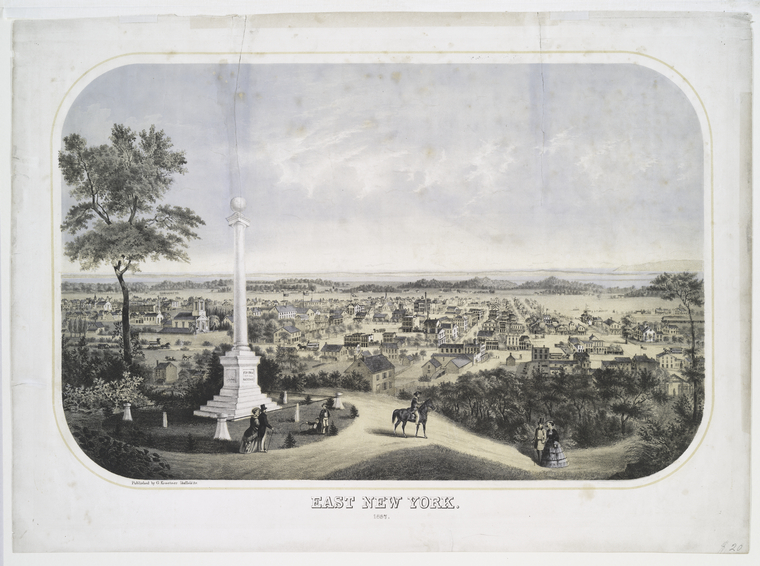
|
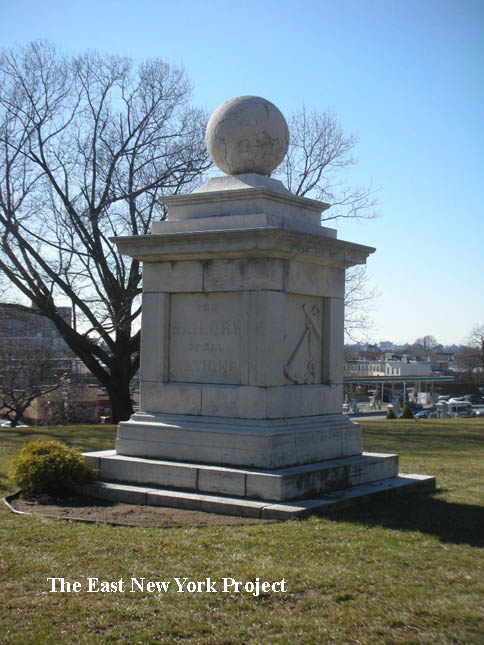 |
Sailor's Monument We start with a very famous lithograph. Executed by Blumner and Kraetzer in 1867, it depicts the view from Beacon Hill overlooking East New York. Originally known as Howard's Point, a reference to the Howard House, it became known as Beacon Hill because the obelisk acted as a marker for navigators. When the monument was moved in the 1950s, the obelisk was damaged. It took me a while to find it for this 2009 photo. |
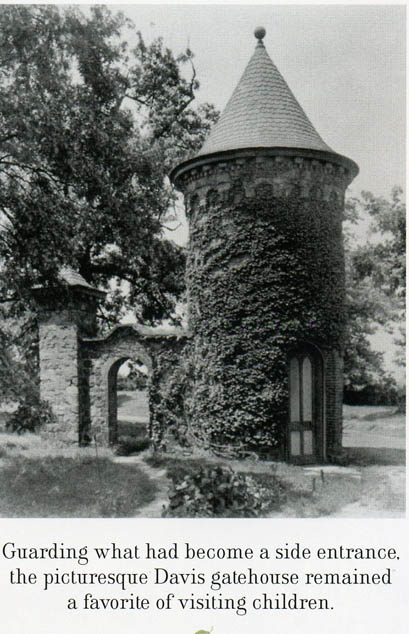
|
Original entrance gate As a rule I don't use images from books in print, but I'm plugging John's book so I drew one example of an historic picture. This Norman-style tower stood at the original entrance, about where Chauncey Street in Bushwick ends today. | |
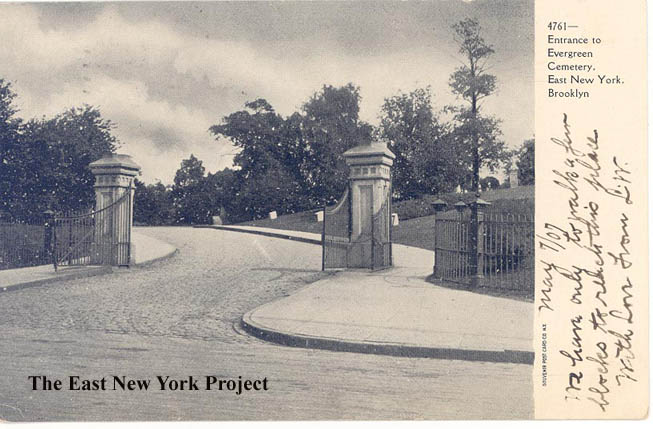
|
Entrance to Evergreen Cemetery Maker: Souvenir Post Card Co. Dated: 1907 Status: Own(RG) Some historical background. The cemetery was founded in 1849 as The Cemetery of the Evergreens. Rousmaniere points out that "Evergreen" was symbolic; pine cones and evergreens symbolize rebirth and immortality. Evergreens were later brought to the cemetery from the Catskill Mountains by Rev. John D. Wells and A. P. Cummings. The land was purchased from a number of the local farming families, including the Howards. Alexander Jackson Davis and Andrew Jackson Downing, the most noted architect and landscape architect of the time, teamed up for the inital design. This postcard shows the main entrance which had been moved to Bushwick Avenue opposite Conway Street. | |
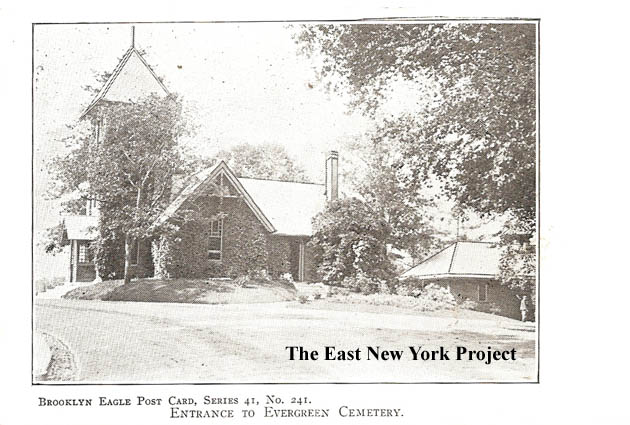
|
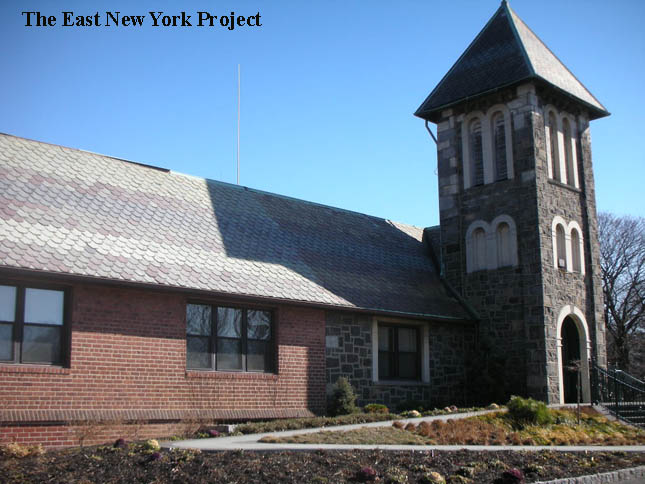 |
Entrance to Evergreen Cemetery Maker: Brooklyn Eagle Dated: Unk Status: Own (RG) The Gothic Revival chapel designed by Alexander Jackson Davis still stands, and operates as the office for the cemetery. |
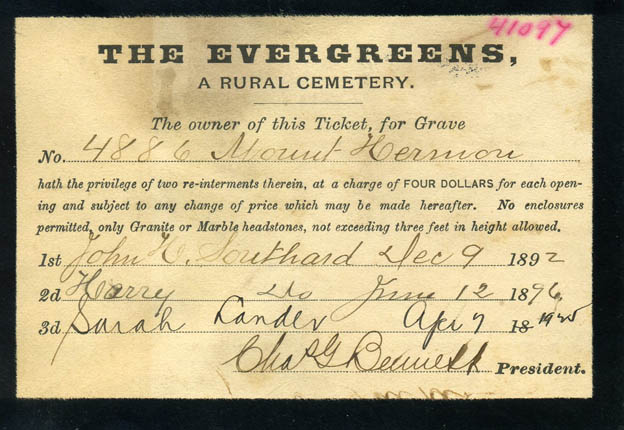
|
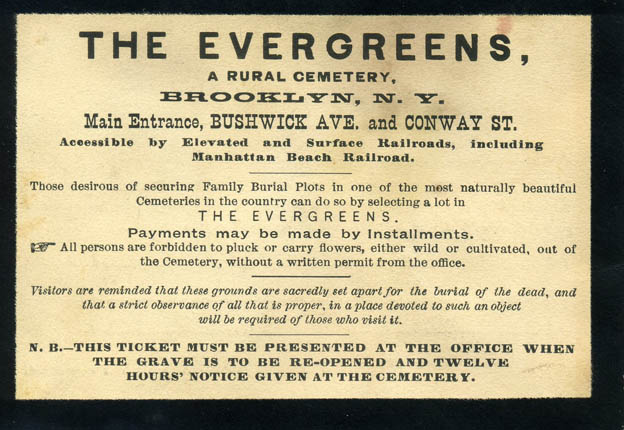 |
Burial card, 1892 Card issued to plot holders for future interments. |
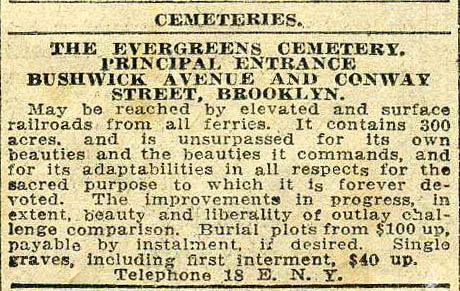
|
|
Advertisements On the left, a small print ad from a 1918 New York newspaper. On the right, a full page ad that the cemetery used for a number of years in the annual Brooklyn Daily Eagle almanac. |
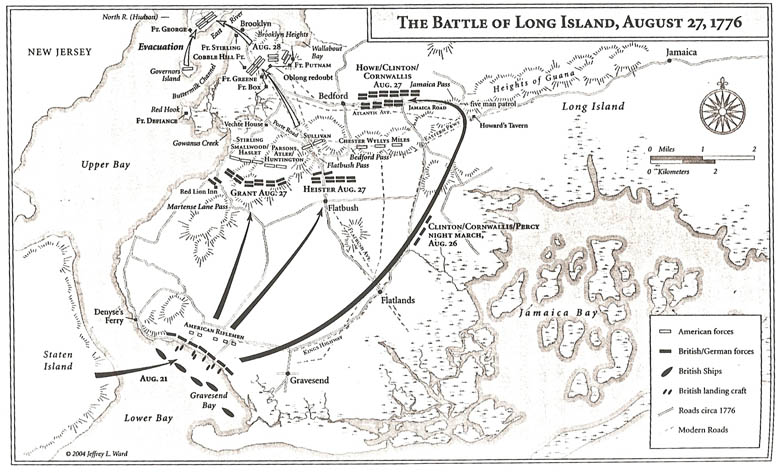
|
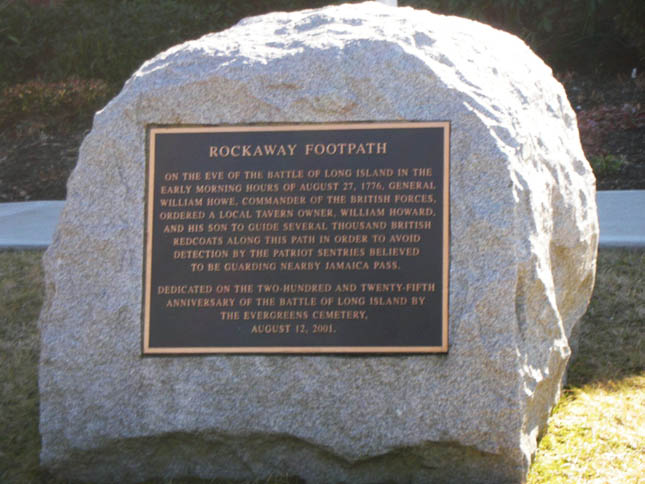 |
The Rockaway Path Now we wind the clock back to August 27, 1776. The British had landed in Brooklyn and General Howe was leading one group of troops on a flanking maneuver to surprise Washington from the east. They arrived at the Howard House (where the bus depot at Eastern Parkway stands today) and forced the proprietor, William Howard, to lead them on an Indian trail known as the Rockway Path. The exact location of the path is unknown, but there is a marker in Evergreen Cemetery in what is considered an educational guess. |
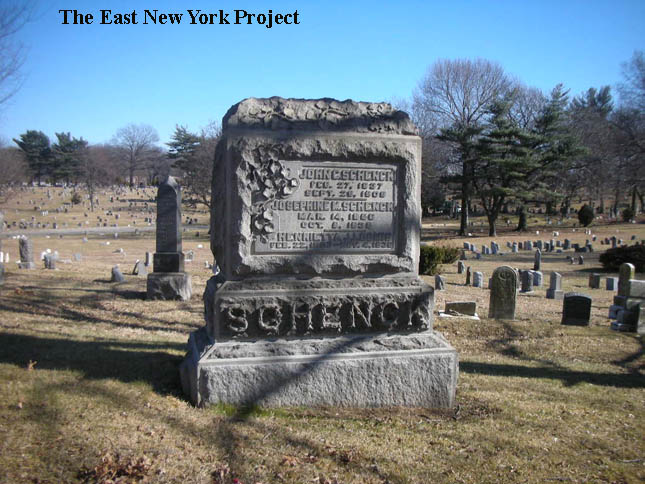
|
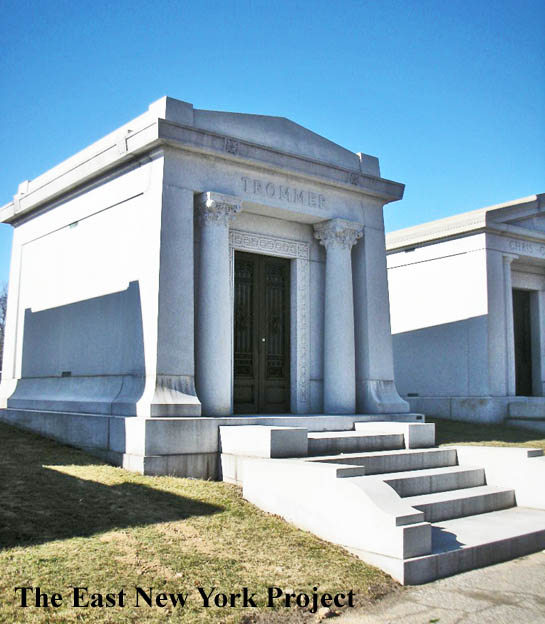 |
A number of prominent early East New Yorkers are interred at Evergreens Cemetery. John C. Schenck's house is still standing on Barbey Street and can be found on the Barbey Street page under Zone 2. Trommer's Brewey and Restaurant stood for many years across from the cemetery on Bushwick Avenue. |
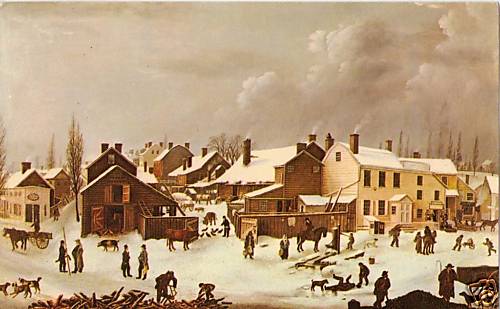
|
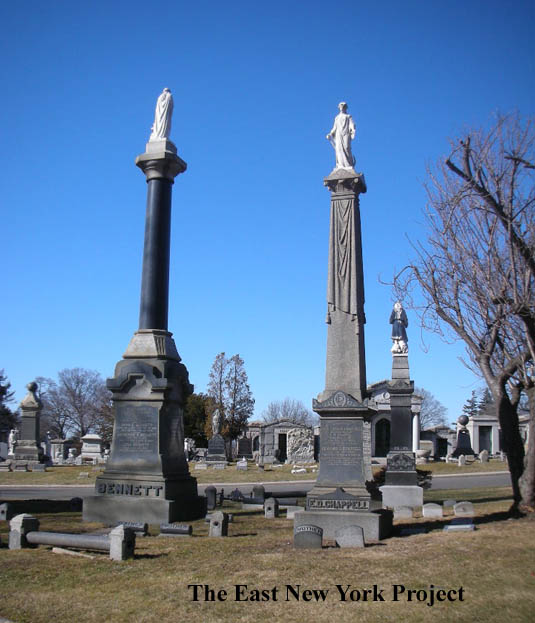 |
This early streetscape painting is not East New York. It was done by Francis Guy in 1820 from the window of his house near Fulton Ferry. He is an example of the number of re-interments brought to Evergreen Cemetery. Guy passed shortly after the completion of this painting, and was buried in the Sands Street Methodist Church graveyard. The building of the Brooklyn Bridge necessitated that several local churches sell out and transfer remains. On the right, the Bennett family plot. |
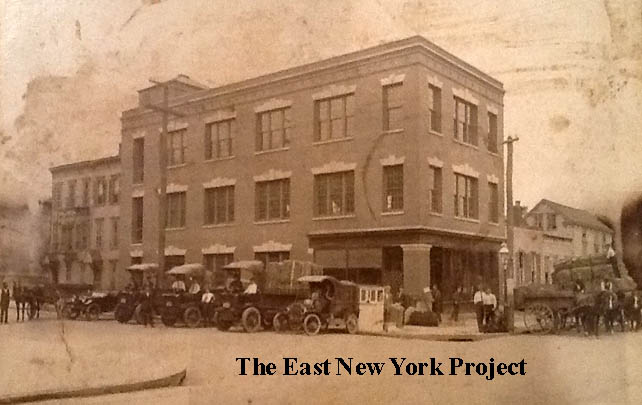
|
This shot was sent by Karen Held; though it is just outside of East New York it is closely tied to the cemeteries. It is a shot of Hugh Kenney and Sons business at 1801 Dean Street (today's Crown Heights/Ocean Hill neighborhood.) Karen, a descendant of Hugh Kenney, explained that his business consisted of going around to all the cemeteries and cleaning out all the old floral wreaths on the graves. The cemeteries paid nothing for the service, the the money came from recycling all the wire frames used to construct the wreaths. | |
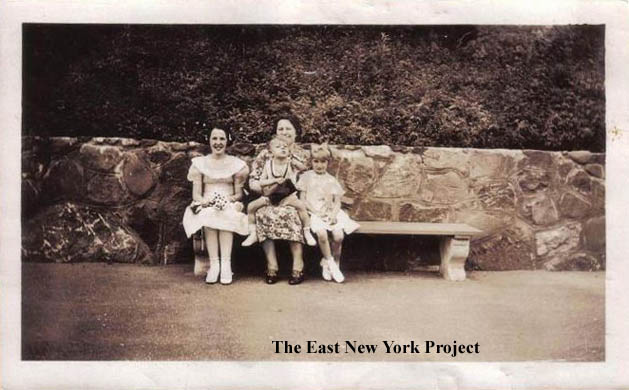
|
A slight detour here. This family pic comes from Tim O'Reilly. The picture was marked "Bushwick Ave." and is from 1938 or 1939. We think that low wall could be Evergreens, but it doesn't resemble anything there today. If anyone recognizes it let us know. | |
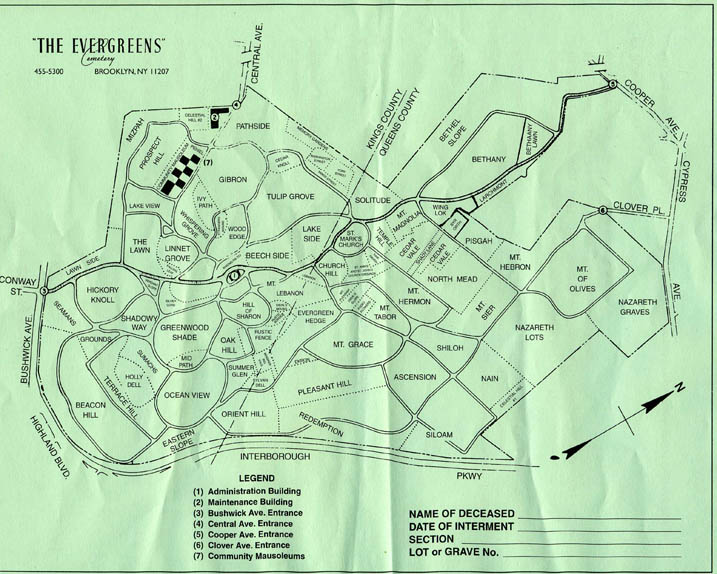
|
The current map issued by the cemetery. Click here for the cemetery's website. | |